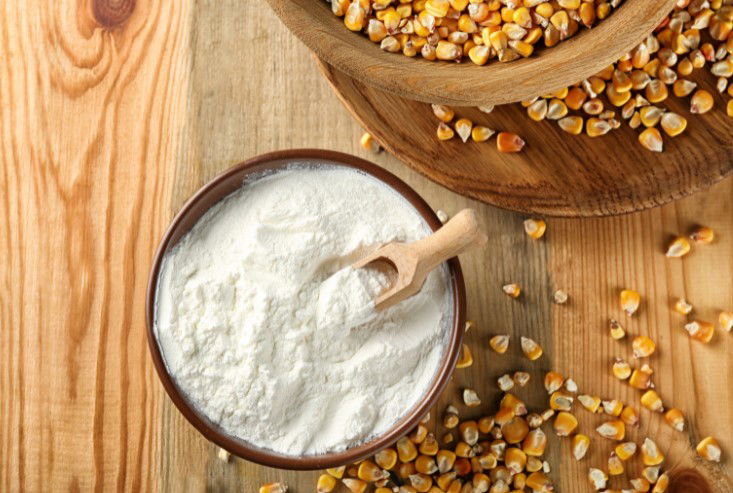Cornstarch is made from the white endosperm at the center of each corn kernel. After the outer layers of the kernel are removed, the endosperm is dried and then ground into a very fine powder.
Cornstarch is incredibly versatile and is one of the most widely used ingredients when it comes to thickening soups and sauces. Not to mention its usefulness in baking and deep-frying. Plus it’s available at just about every grocery store and is generally very inexpensive.
But, while cornstarch is often the go-to choice in many recipes, there are a whole host of substitutes that work just as well, and some even better.
So, read on to find 8 cornstarch substitutes that will get you through any recipe. And who knows, you may even end up with an alternative that works better than the original.
In This Article
What Can I Substitute For Cornstarch?
1. Potato Starch

Potato starch is an excellent cornstarch substitute and perhaps the very best when it comes to deep frying.
Even though potato starch is made from a completely different plant, the two products work very similarly. One of the reasons potato starch makes such a great substitute is that you can use it in equal amounts in most situations. That means no recipe conversions or math required here!
But, if potato starch has one weakness, it’s that it doesn’t hold up well when cooked for long periods of time. That means this wouldn’t be my top choice when it comes to thickening pie fillings. And if you use it to thicken a soup or sauce, do it towards the end of the cooking process for the best results.

Pro Tip: Next time you’re going to dredge and deep fry something, try using potato starch in place of cornstarch or all-purpose flour. It will create an incredibly light and crispy crust, and it won’t absorb excess oil like wheat flour can.
2. Arrowroot Starch
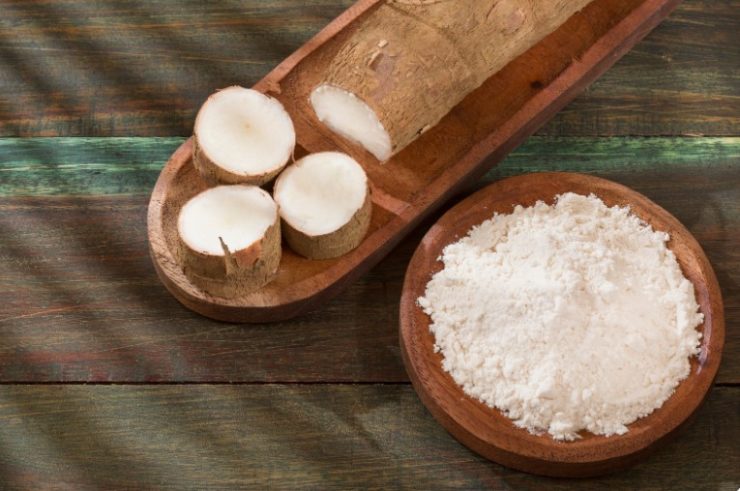
Arrowroot starch is generally made from the starchy arrowroot tuber, but can also be made from other tubers like cassava or tapioca.
This is another option that will keep your recipes gluten and grain-free. With arrowroot, you also have the added bonus of being able to use it in equal amounts to cornstarch. And, it’s basically flavorless, so you don’t have to worry about changing the taste of your recipe.
Similar to potato starch, arrowroot is best used at the end of the cooking process as it can break down and lose its thickening power if cooked for too long.
3. Rice Flour
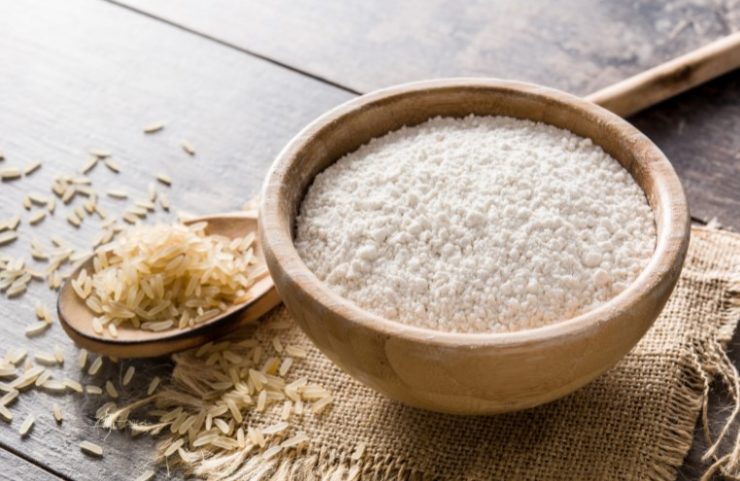
Rice flour comes in three different forms; white, brown, and sweet. But, when you’re looking for a cornstarch substitute, it’s the white rice flour that you want.
Brown rice flour can be used in a pinch, but it will have more of an effect on the color and taste of your recipe. Sweet rice flour, on the other hand, should be avoided altogether since it acts completely different from cornstarch. You may also see sweet rice flour labeled as mochiko, or glutinous rice flour.
You can use white rice flour for just about anything you would cornstarch. And it’s right up there with potato starch as one of the best options for deep frying. Plus, you can even make your own rice flour by finely grinding dry white rice in a blender or spice grinder.

Pro Tip: When thickening sauces with cornstarch, you must first make a slurry. But, you can skip this step with rice flour and whisk it directly into simmering liquids without worrying about lumps.
4. Tapioca Starch
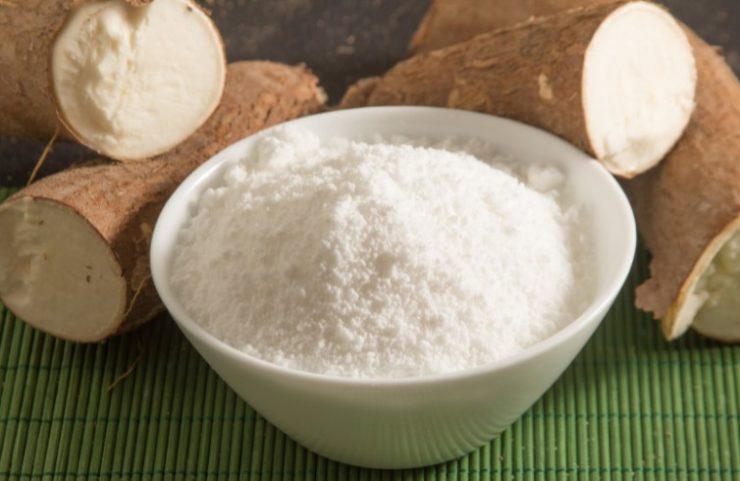
Tapioca starch is made by juicing cassava roots and then evaporating all of the liquid. The starchy powder that’s leftover is another option that works very similarly to cornstarch.
It doesn’t have much of its own flavor and I wouldn’t necessarily call tapioca starch sweet, but it lends itself particularly well to desserts. You can also use it in baking and sauce thickening, but my favorite applications are for thickening puddings and pie fillings.
The thickening power isn’t quite as great as cornstarch, so plan on using about twice as much tapioca starch when substituting.
5. Cassava Flour
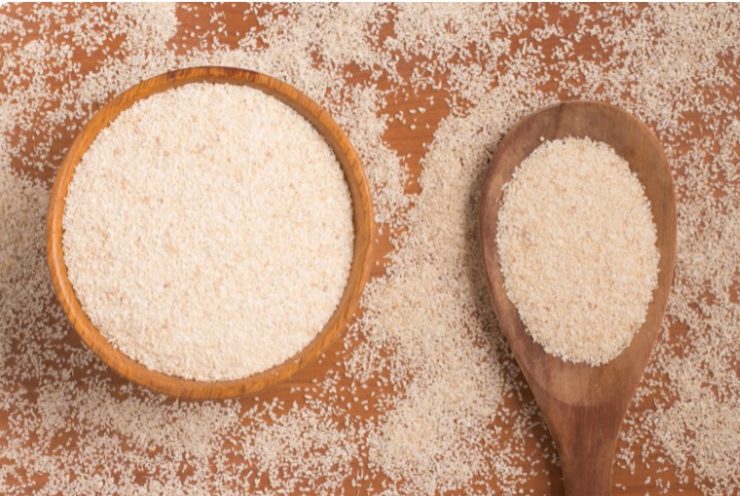
I know that I just said tapioca starch is made from cassava root, but the two products are made differently and sold under different names.
While tapioca starch is made from the juice of the cassava root, cassava flour is made by drying and then grinding the entire root.
You can use both products interchangeably in most situations. However, cassava flour is not always quite as fine as tapioca starch, but you do get the added benefit of higher nutrient and fiber content.
6. Kuzu Starch
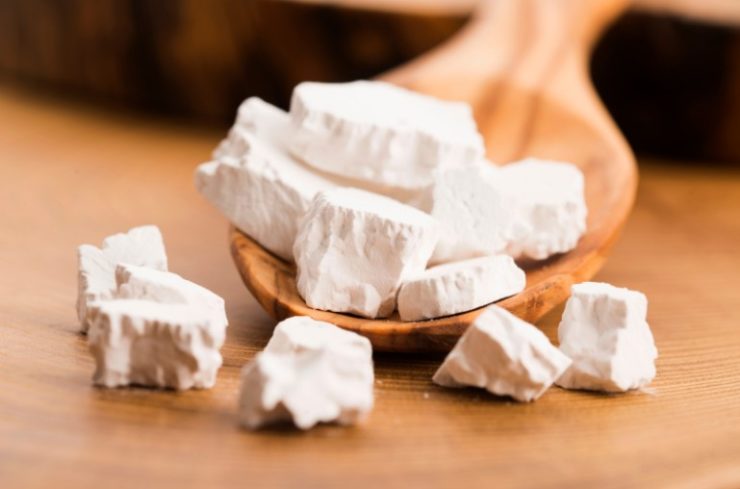
Kuzu starch might be the oddball that no one’s heard of, but it’s widely used in professional kitchens as well as in Japan and China where the plant is native.
Kuzu (sometimes labeled kudzu or Japanese arrowroot) can be used for almost anything you would use cornstarch for. While dry, kuzu tends to form large chunks that can make it difficult to use for baking and frying applications.
But, those clumps easily dissolve when used as a slurry for thickening soups and sauces. And that’s where this starch really shines.
One of the reasons that this is a popular choice in professional kitchens is that it stays clear when cooked, unlike many options that turn liquids cloudy. Plus, it holds together very well even when cooked for long periods.
7. Wondra Flour
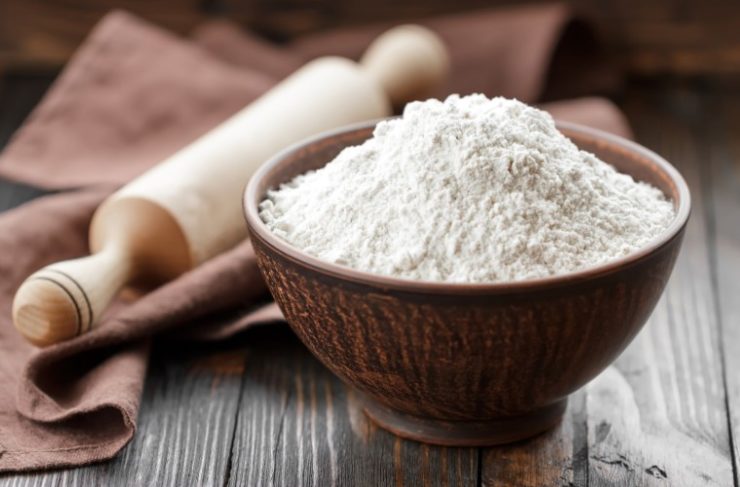
I hardly ever hear of people using Wondra, and I don’t know that I’ve ever actually bought it myself. But, I have distinct memories of my grandma using it every time she made gravy. And I have to admit, it’s a brilliant move.
Wondra is made from high-starch wheat that’s been very finely milled, turning it into what some call “instant flour”. That means you can use it as is, instead of going through the process of making a slurry or roux with regular flour. So go ahead and whisk it directly into simmering liquids to thicken them.
This makes it fast, clean, and easy to use. Plus, you don’t have to worry about running out of roux before your sauce is thick enough, then having to go through the process of making more to finish the dish.
Just remember that since Wondra is made from wheat, it does contain gluten.
8. All-Purpose Flour
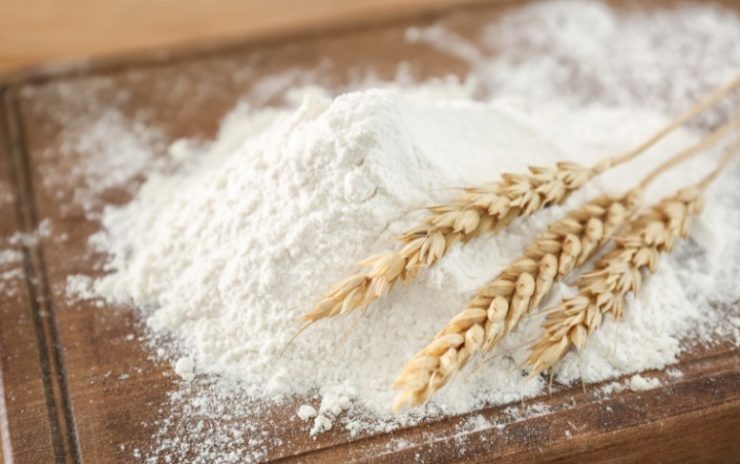
All-purpose flour is a solid alternative because there’s a good chance you already have some in your pantry. Unless you’re gluten intolerant or course, in which case go ahead and skip this option altogether.
When it comes to baking, it’s the gluten content that makes this one of the best substitutes around. In many cases, you’ll actually get better structure, texture, and flavor than you would with cornstarch alone.
You can substitute wheat flour in a lot of different situations. But, it behaves differently than cornstarch and the other pure starch alternatives on this list. So be prepared to make additional adjustments to your recipe.
Tips For Working With Cornstarch Substitutes
Cornstarch is a very versatile ingredient when it comes to baking, frying, and thickening. And, since it’s a pure starch with little to no unique flavor, it’s actually quite easy to substitute.
In general, you’ll have the easiest time and best results using another pure starch. Most of them act very similarly, won’t affect the flavor of a recipe, and will keep everything gluten-free.
In some cases, you can get away using Wondra or all-purpose flour, but those contain gluten and behave differently in a lot of cooking scenarios.
Frequently Asked Questions
Can I Use Cornmeal Instead Of Cornstarch?
Cornmeal is not a good substitute for cornstarch. Even though they come from the same plant, cornmeal is made from the entire corn kernel, while cornstarch only contains the starch from the plant.
What’s The Best Cornstarch Substitute For Pie?
Most starch substitutes can be used to thicken pie filling, but tapioca starch has great gelling properties and works particularly well for sweet applications like pie.
What’s The Best Cornstarch Substitute For Deep Frying?
Potato starch and white rice flour are the two best substitutes for cornstarch when it comes to deep-frying. Bother will create a very light and crisp crust without absorbing or holding onto excess oil.
